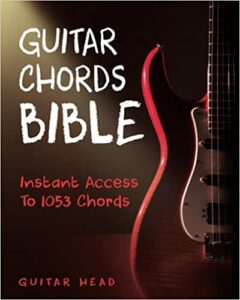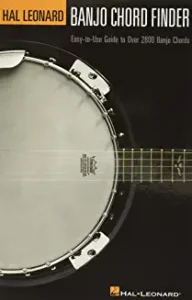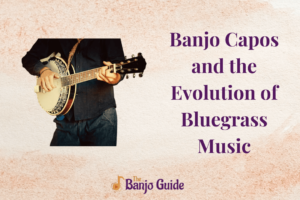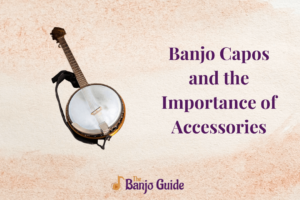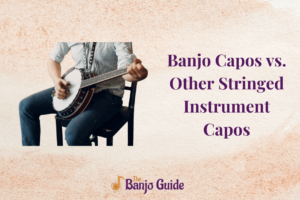Thinking of jazzing it up at your next college party? Feels like a little banjo(ing) is missing at your house parties? Part of the band and wants to learn banjo from its core? Thinking of mastering the art of banjo chords? Well the answer to all these questions is a recurring yes, then you need a banjo chord fact in your life to keep everybody lured and banjo trapped. A banjo chord is created when two or more strings are strummed altogether. Learning to read the banjo chords and gaining knowledge about the different minor and major chords can help you jazz it all up!
How to read Banjo chords?
Banjo is one of the easiest instruments to play. There are many ways one can begin learning to play the banjo. The entire instrument is based on banjo chords and their sequencing. Once a person learns the progression of banjo chords, it becomes easier for them to play the musical instrument. If you’re to play a tune on Banjo, then you require at least 2 chords. A banjo chord progression is an analogy for a change of chords. So for playing a song, it is evident that you need to change the chord. Thus you can use banjo chord progression to figure out how switching from one chord to another helps create music. It is similar to that of a song’s notes progression.
The first step in mastering the art of banjo chords is to learn to read the banjo chords. Many banjo pickers(Banjo players) or beginners who are learning to play banjo using many techniques to read the chords. Here’s the compilation of a few insider tricks you can use to master the art of banjo chords.
1. Reading a tablature
Many people worldwide describe themselves as self-learned banjo picker (banjo players) by the use of youtube tutorials or by reading and comprehending the banjo tablatures or tabs. To read banjo chords means reading a Banjo tab or tablature. It is made in a way to is similar to basic musical notation. It is beginner-friendly and helps keep note of the rhythm. It helps in showing the banjo strings, and the positioning of fingers to strum the chord and match the music progressions.
You must remember that a banjo tab is read and versed from left to right.
2. Chord diagrams
Chord diagrams have proven to be yet another one of the techniques not only banjo teachers but also famous banjo pickers used to master their art. Chord diagrams help you get native to the instrument since it helps in guiding a person in figuring out the location of certain chords. It helps one to understand the positioning of fingers on the chords. If somehow you manage to learn this play of banjo chords you will be able to play any song that you wish.
Now reading banjo chords might feel daunting at first but once you get the hang of it , you are able to learn the banjo chord language from its core.
Facts on banjo chords
- When it comes to types of banjo chords people believe that chords on every banjo are different and so are the instructions to play them. Well, that is where mastering the art of banjo chords makes you different from a layman. A chord is formed when you play several strings, altogether.
- Every banjo is strummed in the same way, that is with a pick. So by this, you can definitely assure that the song that you’re playing on a 5-string banjo will have about similar progression to that of a 4 -string banjo. The only difference is of the major and minor notes.
- A 5-string banjo’s major chords will be A,B,C, D, E,F, G,H while in a 4-string banjo the major chords are namely D, G,B,E.
- Similarly, the grim difference between a tenor banjo and a regular 5 string banjo is that the former’s major chords are as follows -C, F, and G.
- When you hear about an Irish tenor banjo, the first thing that strikes your brain chords is that how is it different from the tenor banjo. Well, an Irish tenor banjo is usually played in the fifth scale degree. It is often contrasted with violin and is alike a viola. The tuning chords for an Irish tenor banjo are G,D,A and E with additional variations.
- When you hear a piece of old-time jazz music or any old-time music tale played on a banjo observe how the chords are strumming. They are often played on a double c banjo chord progression. Additionally, a double c banjo chord is the pioneer of the lowest pitch and you will observe a bulk use of the ‘G’ chord. Its tuning chords are namely G,C,G.C and D.
- Generally, people feel since banjo and guitar are two different instruments their chords too are different. Chords are formed when several strings are played together. Thus chords in all the instruments are similar. Also, both Banjo and Guitar are majorly played during a concert. Despite such compelling similarities the only difference between the two is of shape and the voice of the music that they strum.
- There are many songs that you can strum on banjo and be the star of the party. Once your hands are set on the banjo chords, every song that you wish to play will be a piece of cake for you to play. But for people who are beginners, You are my sunshine by Jimmy Davis and Charles Mitchell is not only easy but the melody on the banjo will lift their spirits high.
Conclusion
Your Banjo dreams all lie in the tunes of the banjo chords. Once you learn their play game, you just need to get ready to play the place and jazz it up!
FAQs-
1. What are basic chords on a banjo?
Ans – A chord is formed when you play several strings, altogether. Generally, there are seven major banjo chords namely – A, B ,C ,D E, F, G, and H. These chords are played in combination helping one to create music through the banjo instrument.
2. Are Banjo chords the same as Guitar chords?
Ans- Generally people feel since banjo and guitar are two different instruments their chords too are different. Chords are formed when several strings are played together. Thus chords in all the instruments are similar. Also, both Banjo and Guitar are majorly played during a concert. Despite such compelling similarities the only difference between the two is of shape and the voice of the music that they strum.
3. What is the easiest song to play on a banjo?
Ans- Once your hands are set on the banjo chords, every song that you wish to play will be a piece of cake for you to play. But for people who are beginners, You are my sunshine by Jimmy Davis and Charles Mitchell is not only easy but the melody on the banjo will lift their spirits high.
4. What are the chords on a 4 string banjo?
Ans- A banjo, just like any other string instrument, can have a varying number of strings on its instrumental surface. The number of rings also affects the type of chords on a banjo. A 4 string banjo has four major chords namely – D,G ,B ,E.
5. How do you read banjo chords?
Ans – To read banjo chords means reading a Banjo tab or tablature. It is made in a way to be similar to basic musical notation. It is beginner-friendly and helps keep note of the rhythm.
Some people also refer to chord diagrams for playing the instrument. It helps one to understand the positioning of fingers on the chords. A banjo chord diagram helps in guiding a person in figuring out the location of certain chords.
6. What is Banjo Chords Progression?
Ans- If you’re to play a tune on Banjo, then you require at least 2 chords. A banjo chord progression is an analogy of a change of chords. So for playing a song, it is evident that you need to change the chord. Thus you can use banjo chord progression to figure out how switching from one chord to another helps create music. It is similar to that of a song’s notes progression.
7. What is a D7 chord on Banjo?
Ans- The D7 chord on a banjo is the seventh variation, an advanced note, on the instrument. D7 Banjo chord is also called a dominant chord. This is because it takes the entire musical aura to the 5th scale and is a major chord but with an additional minor key. Thus it is an advanced chord in nature.
8. What are banjo minor chords?
Ans- As discussed in the article, generally banjo consists of 7 major chords namely – A, B, C, D, E, F , G, and H with their minor variations. When playing the banjo keep in mind that after every chord there is a minor chord like c- minor etc.

I own a music instruments shop. My go to instrument is a banjo. My business makes it easier for me to access the instruments from various brands and of various types. I will give my honest opinion here to help out others in choosing the right instrument for them.

